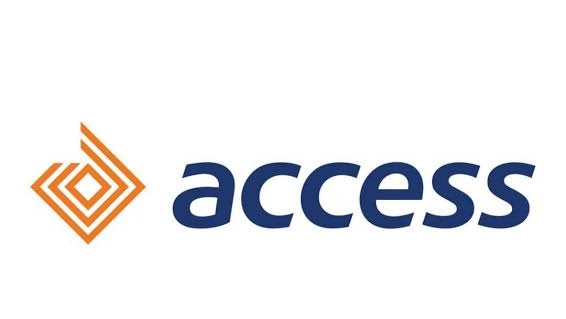- Search for topics or project materials by department. 2015/2016 Research Work 46 ARCHITECTURE 12 Accounting 158 Agriculture & Farming 21 Arts and Crafts 25 BIOCHEMISTRY 30 Bank & Finance 45 Biology 1 Business Administration 162 CHEMICAL ENGINEERING 18 Career People 18 Computer Science 0 Computer Science 244 Computer Science E-books 0 ECONOMICS 117 EDUCATION 78 ELECTRICAL ELECTRONICS 88 ENGLISH 14 ESTATE MANAGEMENT 16 Electrical Electronics 0 Food 19 Forum 0 General Topics 4 HOSPITALITY & TOURISM 123 Import & Export 10 Land Survey & Geoinformatics 68 Law 7 MARKETING 37 Marketing & Advertising 11 Mass communication 155 Masters and Doctorate 118 Mechanical Engineering books 0 Media & Publishing 6 Medical Science E-books 0 Micro Biology 4 Micro Biology 8 OTHERS 0 Oil & Gas 11 Online & Internet 36 POLITICAL SCIENCE 0 Program / Source Code 0 Programming E-books 0 Public Administration 25 Real Estate 20 Religious E-boooks 0 Retail 20 STATISTICS 17 Science Laboratory 0 Science laboratory 56 Sermons & Prophecies Ebook 0 Services 19 Small Scale Manufacturing 21 System Applications 0 Technology 30
ACCOUNTING INFORMATION: A TOOL FOR DECISION MAKING IN AN ORGANISATION
ACCOUNTING INFORMATION: A TOOL FOR DECISION MAKING IN AN ORGANISATIONTABLE OF CONTENTS
1.1 Statement of the problem. 4
1.3 Significance of the study. 5
1.5 Limitation of the study. 7
2.1 Accounting information. 10
2.3 Types of business decision making and the impact in an organisation. 12
2.4 The need for accounting in business decision. 13
2.5 Accounting as a tool for decision making. 15
2.6 Costing and application in decision making. 16
2.7 Budgeting: how it aids decisionmaking. 26
2.8 Financial ratiocontribution to decision making. 29
2.9 Accounting in management planning and control33
3.5 Description of the Population. 40
3.7 Statistical Analysis of data method. 42
4.0 Presentation and Analysis of Data44
4.1 Analysis of Returned Questionnaire44
4.2 Administered questions, analysis and interpretation. 45
5.0 Summary, Conclusion and Recommendation. 55
CHAPTER ONE
1.0 Introduction
Accounting is something other than a set of clever devices for beating the income tax with little or on damage to one conscience, something more than specious way of window dressing where the best possible appearance is given to somewhat undesirable stock of goods. It is a universal language of business.
Industry and commercial activities involves, capital, man, material and machines and bring into their compass transportation, finance, insurance, banking and other features of our complex economic life. One common factor could be used to focus these activities. Money in business plays a dual role. Firstly, as physical economic factor of production and secondly as an abstract economic measure of value.
The final reconciliation of all the elements of business is reflected in the account, in term of money and if the value of money changes the fact must be recognised and taken into account. It is necessary to be able to measure the economic value in any combination together with the value of the utility.
One among numerous tasks of accounting is to reduce the multitude of these transactions to its virtual figure of profit and loss. The principle applicable is financial control. The modern technique of management of any business or foremost in its thinking should be: firstly, is to earn profit and secondly, to stay to pay debts as they fall due, of course, there are other objectives of business manager such as providing more goods and services at a lower cost. It meets the two basic task of survival, operating profitability and solvency.
The following question may arise. How do business executives know whether a company is earning profit or incurring losses How do they know whether the company is solvent or insolvent, say a month from today The answer to these question is in one word ACCOUNTING.
Oyebamiji and Adebisi, 2005 defined accounting as the recording of economic events associated with an enterprises using information and data which is usually expressed in numerical and monetary terms, and the communication of the result of this in the form of financial statement to user groups.
Place An Order for the Complete Material from Chapter One to Five. Click This Link ACCOUNTING INFORMATION: A TOOL FOR DECISION MAKING IN AN ORGANISATION To Order
View Related Projects
ASSESSING THE IMPACT OF AUDITORS INDEPENDENCE ON INTERNAL CONTROL – A SURVEY OF THREE MANUFACTURING FIRMS IN RIVERS STATE
ABSTRACTThis research study was aimed at critically assessing the statutory auditors independence on internal contr...
Continue readingEFFECTIVENESS OF INVENTORY MANAGEMENT IN A MANUFACTURING COMPANY (A CASE STUDY OF AMA GREENFIELD BREWERIES PLC, ENUGU, NIGERIA)
ABSTRACTThis study examines the essence of effective inventories control and management to manufacturing companies with...
Continue readingTHE IMPACT OF INTERNAL CONTROL SYSTEM ON REVENUE GENERATION: CASE STUDY OF POWER HOLDING COMPANY OF NIGERIA (P.H.C.N) OKPARA AVENUE ENUGU
ABSTRACTThe objective of this study was to evaluate the internal control system in operation at power holding com...
Continue reading

